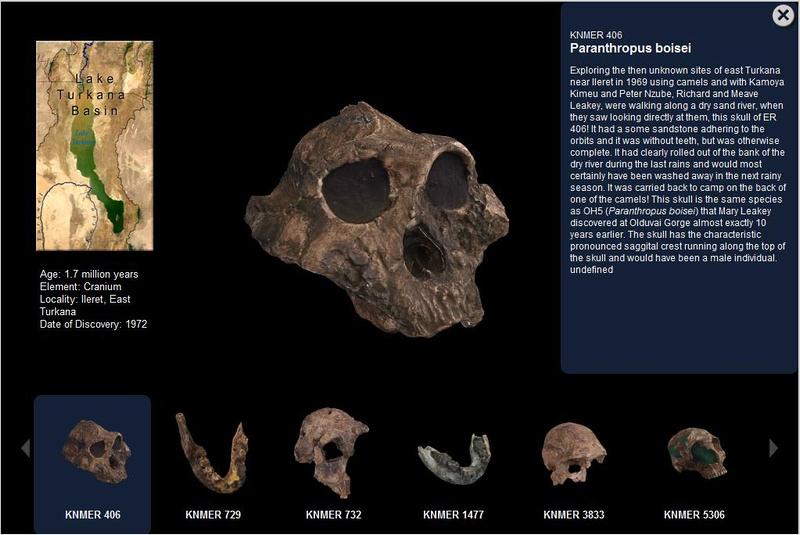Africanfossil.org: An Amazing Adventure in a 3D Museum
Kenya is well known for her fantastic savanna wildlife, splendid landscapes, rich culture and excellent runners. Yet, less is known for the abundance of her well-preserved prehistorical remains, such as fossils and stone tools used by early human ancestors. For years, scientists have been trying to bring the amazing fossil collection housed at the National Museums of Kenya to the general public. Now, preliminary work has been done on the Internet where viewers are allow to have close inspections of some most spectacular fossils found in Kenya. Some of them bear the mysteries of our own ancestry millions of years ago.
At a glance, this website may look like a webpage with an interior photo of a paleontology laboratory. In fact, there is a lot to explore!


Apart from getting different views of this virtual lab, by clicking on the tables where fossils are on display, you can have a 360 degree free look at its digital collection, including early hominins and various animals that once lived alongside each other. On the walls, there are more secrets than what you might think would be just decorations.


When you are ready to test your talents in identifying bones and fossils, simply click on the tables and follow the instructions on the screen. You will well master how to handle these skulls and mandibles on your computer, by yourself! All the specimens you can see here are built in 3D models and made available to everyone, thanks to our advancing technology. In this fascinated 3D fossil viewer, there is also brief information about every single specimen, such as age, body part and place found. A short story of each of the exhibits is available as well. You might even feel the excitement of the discoverers when they found these amazing pieces in the first place.
This project, aiming at providing educational materials as well as raising public concern, is led by world renowned paleontologist Louise Leakey and supported by Autodesk University and National Geographic. With some of the imaging process done in the National Museums of Kenya, in the real lab of Earth Sciences Department, it is my greatest honor to be part of it. Thank you to all the members of the team. We have done a very good job together. Thank you to my colleagues in the National Museums of Kenya, for your enormous supports of our work.
As the beginning of this project, we have only covered a very small fraction of all the fossil remains resting in National Museums of Kenya and Turkana Basin Institute. In the future, we are going to add more 3D models of fossils to the website, especially those of the fauna. On top of that, we are planning to make more exciting experience available on the website, to make it truly an adventure for users.
For more information, please visit this blog post of Shaan Hurley, our computer engineer from Autodesk.
Comments
Thank you for writing and sharing it!